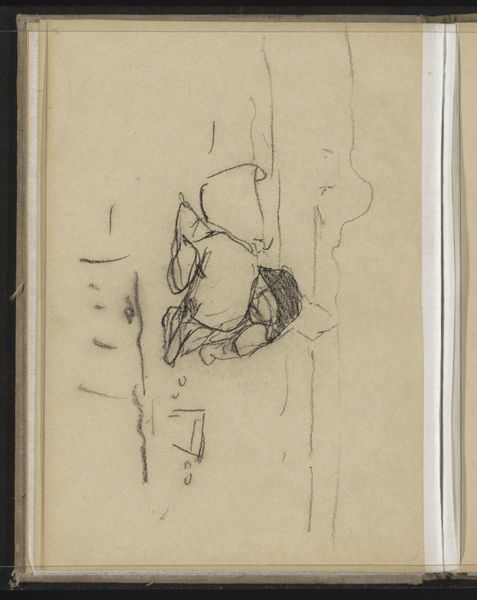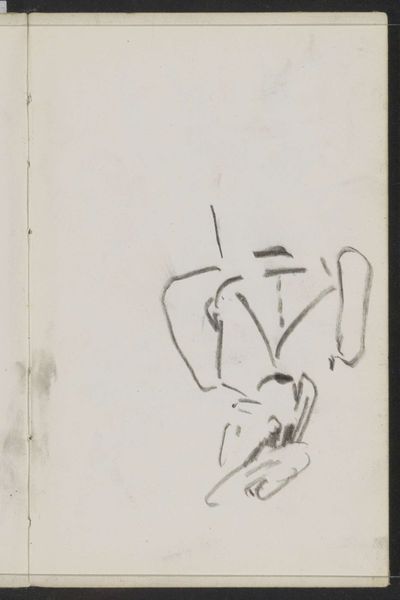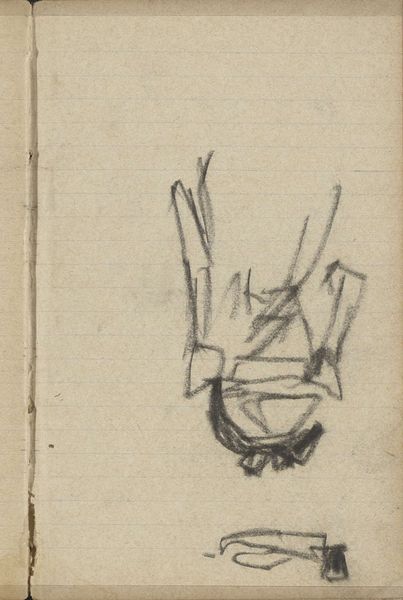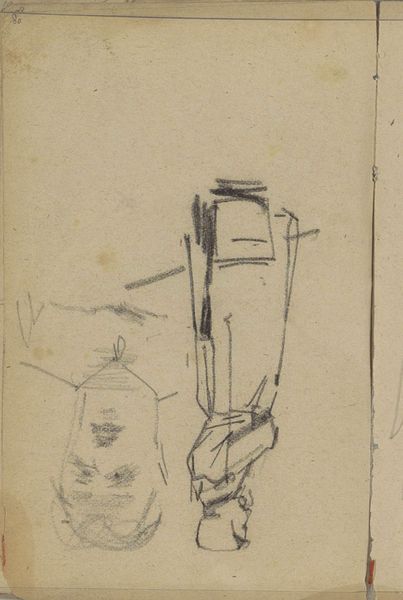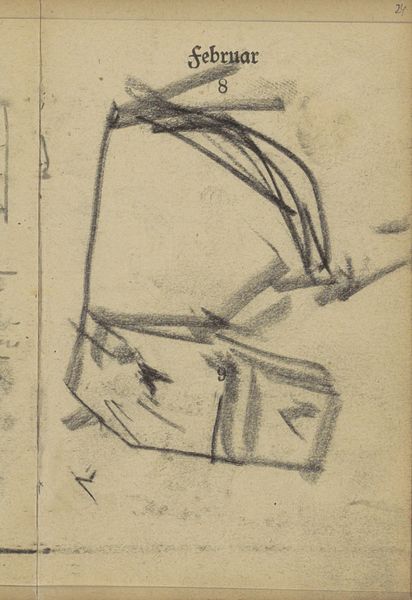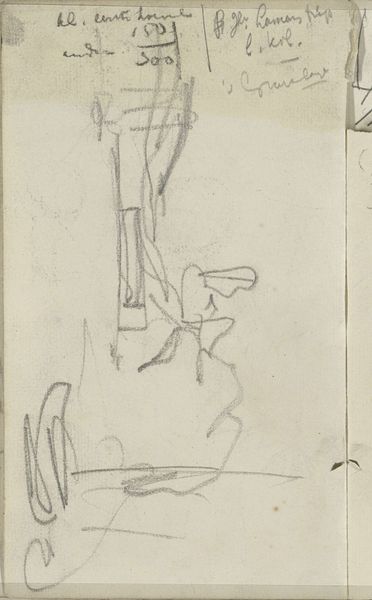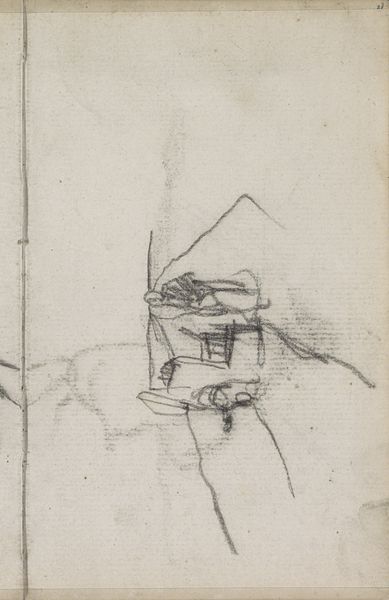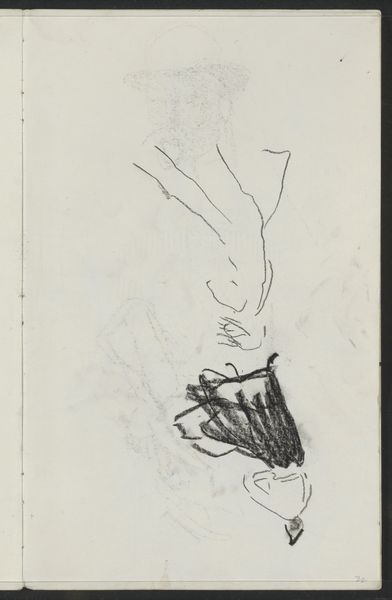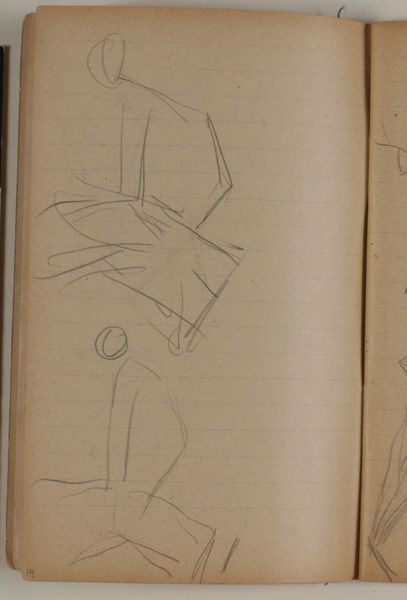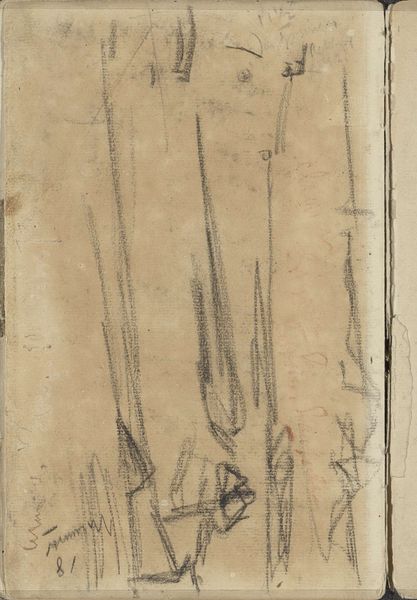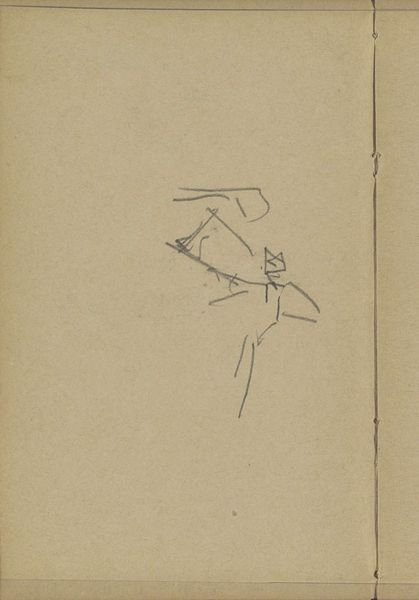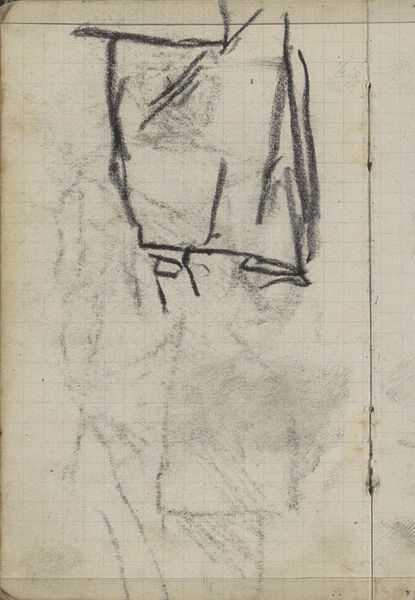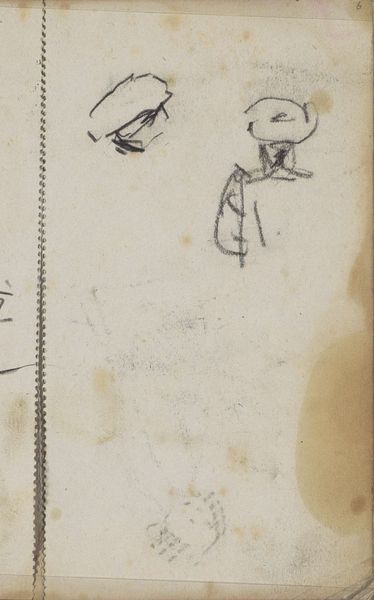
Copyright: Rijks Museum: Open Domain
George Hendrik Breitner captured this figure from behind using a piece of charcoal, freezing it on paper. A seemingly simple image holds within it a myriad of emotional and symbolic depths. The turned back, the averted gaze – it is a motif that echoes through art history. Consider the Rückenfigur, so prominent in Romanticism, particularly in Caspar David Friedrich's work. Here, the figure often stands at the precipice of nature, back to the viewer, contemplating the sublime. Breitner's figure shares this sense of introspection, inviting us to project our own emotions. The back turned can also signify vulnerability, even shame. We see echoes of this in depictions of the prodigal son, returning with head bowed, or in countless images of human sorrow. This gesture taps into our collective memory, evoking a visceral, emotional response. It reveals how gestures are not just physical acts but potent symbols, loaded with cultural and psychological significance. We are connected through time by these shared visual languages.
Comments
No comments
Be the first to comment and join the conversation on the ultimate creative platform.
